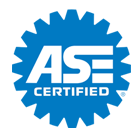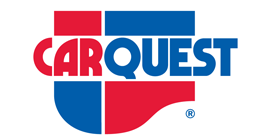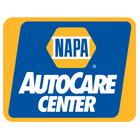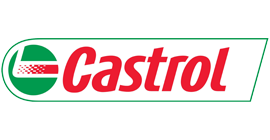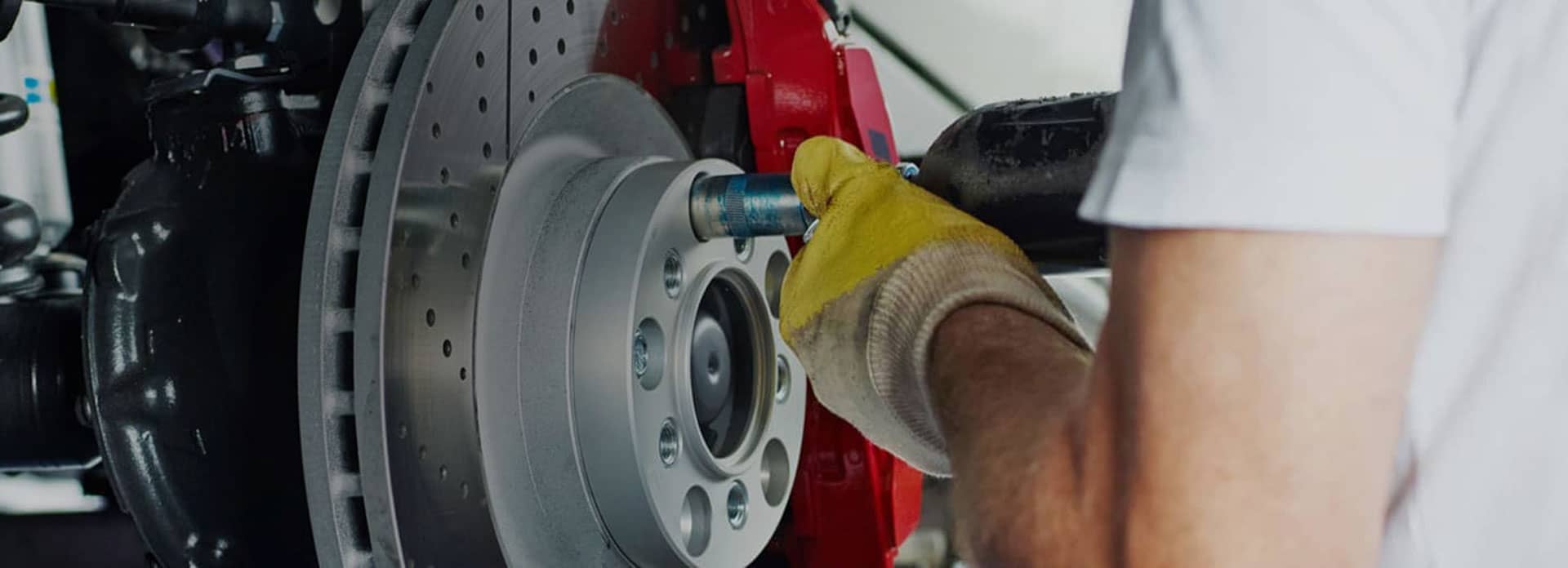
AUTONET TV
Archive for November 2021Don't Start with That (Bad Starter Motor)Posted November 28, 2021 11:32 AMWe've all heard that expression, "That's a non starter." When it comes to your vehicle, that's not music to a driver's ears. That sickening sound when you start the ignition and instead of hearing the engine crank, you hear it slowly turn over and your dash lights go dim. There can be many reasons a vehicle won't start, so here's a little history of how the starter came to be an important component of modern vehicles. You have to move the engine's components to start it. The first cars had a crank that the driver would insert into the front, then start turning things over by hand. When the engine started, you had to release that crank immediately or risk a broken arm. Yes, it happened many times. So, they came up with a better idea: an electric starter, which was a big advance in automotive technology. With this system, an electric motor rotated a series of gears that turned the gasoline engine's crankshaft so its pistons and parts moved and the engine drew in air. While this happened, electricity went to the spark plugs and fuel headed to the cylinders. When the gasoline engine caught, the starter quickly disengaged. Hey, no more broken arms! Modern systems use the same principle, so when your vehicle won't start, here are a few things to look out for that might point to the starter. If the engine turns over s-l-o-w-l-y, it may mean the electric starter motor may just be wearing out and doesn't have enough cranking power. Bushings, brushes, wire windings and a special switch called a commutator may be going bad. If when you engage the ignition you hear a faint click, that could be a symptom one or more of the starter's components have failed. If you hear a loud click, it could mean that an electrical switch called a solenoid may not be switching the motor on. If you hear your engine start to turn over but then it stops and is followed by a grinding sound, some gears may not be meshing the way they should. There may be many more causes (bad alternator, relay, battery, engine, key fob), so this is when it's time to turn it over to your service facility. Sometimes they can send out their own tow truck or recommend a reputable towing company. But it's best not to let it get to this point. Starter problems often give you advance warning that there is a problem with "almost" not starting or "almost" not turning over. So when you see that very first sign, "start" on over to talk this one over with your service advisor. The opposite of a "non-starter" is a starter, and that is music to anyone's ears. autoclinic of brandon Beginning to See the Light (Check Engine Light Diagnostics)Posted November 21, 2021 10:27 AMIt's a light many drivers fear they'll see turn on at the most inopportune time. It's the one on the dash that says "Check Engine," "Service Engine Soon," or it may be simply an engine-shaped light. Your first instinct may be to pull off to the side of the road and turn off the engine. The truth is that Check Engine light can be pointing to problems as simple as a loose gas cap. But it could be as serious as a severely misfiring engine. Don't ignore it because it's there to help you avoid an expensive repair it is designed to alert you to, to tell you something's not quite right. Your vehicle has a connected system of computers and sensors constantly checking to see that all systems are working the way they should. If something isn't, the system will turn on the Check Engine light. If it's flashing, that could be serious. Look at some of the other warning lights or gauges such as heat or oil pressure. They could be telling you your vehicle's problem should be checked right away. In that case, if you can, safely pull off the road and shut the vehicle down. If your vehicle loses power and the Check Engine light is on, try not to push the demands you are making on the engine, such as towing or accelerating hard. Simply put, a flashing Check Engine light should be checked out by a professional as soon as possible. If the Check Engine light is on steadily, manufacturers say it means there's a problem, but it probably doesn't require immediate service. The system is designed to remember the problem it found and store it (as a code) so it can be retrieved later. When you do bring your vehicle in to have us see what's behind the Check Engine light coming on, we’ll hook your vehicle up to a diagnostics tool that can reveal the clues the engine's computers have stored. It takes a trained technician to understand those clues, like a doctor who can interpret a patient's symptoms and come up with the correct diagnosis. Some newer vehicles can even be checked remotely. Once we figure out the problem and repair it, you'll be back on the road again. It's nice to know the Check Engine light is your sentry, standing by to alert you the next time you begin to "see the light." autoclinic of brandon Some New Boots (Suspension Maintenance)Posted November 14, 2021 9:12 AMThere are some boots that don't come in a shoe box and aren't worn on your feet. They are called axle or CV boots, and they can be important parts for many vehicles. That CV stands for constant velocity. CV axles are mainly used in front-wheel drive and all-wheel drive vehicles. They're also used in some rear-wheel drive vehicles with independent suspensions. They have two CV joints, one inner and one outer, placed between the axle and the drive wheels. That way the vehicle's engine power can drive the wheels, no matter what angle they are. They also adjust for the different speeds wheels turn as they go around corners. Because roads are full of all sorts of hazards (dirt, oil, water, grime), these CV joints need to be protected. They also have grease in them to keep the bearings moving smoothly. That's the job of the rubber boots that are supposed to keep that debris out. These CV or axle boots are made of rubber or plastic and usually last a long time without any problem. But sometimes they fail, either from being hit by debris or age causing the rubber or plastic to deteriorate. That can allow the grease to leak out of the joint and the moisture to get in. And that's where the trouble is. So it's important to have a vehicle's CV boots checked periodically, especially when they begin to have more than 100,000 miles/160,000 kilometers on them. A technician inspects them for tears or cracks. Sometimes if the problems are found early enough, the boots can be replaced and the joints can be re-packed with grease. But sometimes the CV joint can wear out even though the boot is intact. When the CV joint fails, you might hear a grinding, humming or clicking noise and feel vibration. Some of these can be difficult to access for service, so many service advisors will recommend replacing the joints and boots at the same time. Just remember, new CV boots won't make a fashion statement, but they will keep your vehicle going down the road for years to come. autoclinic of brandon | ||
SearchArchiveDecember 2009 (3)January 2010 (3) February 2010 (4) March 2010 (4) April 2010 (5) May 2010 (2) June 2010 (1) July 2010 (4) August 2010 (4) September 2010 (3) October 2010 (3) November 2010 (4) December 2010 (5) January 2011 (4) February 2011 (4) March 2011 (5) April 2011 (4) May 2011 (4) June 2011 (1) August 2011 (3) September 2011 (3) October 2011 (2) December 2011 (4) February 2012 (2) March 2012 (4) April 2012 (4) May 2012 (1) June 2012 (3) July 2012 (1) August 2012 (1) November 2012 (1) December 2012 (2) March 2013 (1) April 2013 (4) May 2013 (1) September 2013 (1) October 2013 (5) November 2013 (2) January 2014 (2) February 2014 (4) March 2014 (1) July 2014 (4) August 2014 (7) September 2014 (4) October 2014 (5) November 2014 (4) December 2014 (4) January 2015 (5) February 2015 (4) March 2015 (4) April 2015 (4) May 2015 (3) June 2015 (5) July 2015 (1) September 2015 (2) October 2015 (4) November 2015 (5) December 2015 (2) February 2016 (2) March 2016 (3) April 2016 (4) May 2016 (5) June 2016 (4) July 2016 (5) August 2016 (4) September 2016 (4) October 2016 (4) November 2016 (5) December 2016 (4) January 2017 (5) February 2017 (4) March 2017 (4) April 2017 (4) May 2017 (5) June 2017 (4) July 2017 (5) August 2017 (3) September 2017 (3) October 2017 (4) November 2017 (5) December 2017 (3) January 2018 (5) February 2018 (4) March 2018 (4) April 2018 (5) May 2018 (4) June 2018 (3) July 2018 (5) August 2018 (4) September 2018 (5) October 2018 (4) November 2018 (4) December 2018 (5) January 2019 (5) February 2019 (4) March 2019 (5) April 2019 (4) May 2019 (4) June 2019 (5) July 2019 (4) August 2019 (4) September 2019 (5) October 2019 (4) November 2019 (4) December 2019 (5) January 2020 (5) February 2020 (4) March 2020 (5) April 2020 (4) May 2020 (5) June 2020 (4) July 2020 (4) August 2020 (5) September 2020 (4) October 2020 (4) November 2020 (5) December 2020 (4) January 2021 (6) February 2021 (4) March 2021 (4) April 2021 (4) May 2021 (5) June 2021 (4) July 2021 (4) August 2021 (5) September 2021 (4) October 2021 (5) November 2021 (4) December 2021 (4) January 2022 (6) February 2022 (4) March 2022 (4) April 2022 (4) May 2022 (5) June 2022 (4) July 2022 (5) August 2022 (2) September 2022 (4) October 2022 (5) November 2022 (4) December 2022 (4) January 2023 (5) February 2023 (4) March 2023 (4) April 2023 (5) May 2023 (4) June 2023 (4) July 2023 (5) August 2023 (4) September 2023 (3) October 2023 (3) January 2024 (1) February 2024 (4) | CategoriesService Standards (12)Parts (7)Automotive News (8)Maintenance (52)Fuel System (46)Tires and Wheels (40)Transmission (11)Monitoring System (3)Dashboard (3)Steering (14)Battery (20)Drive Train (9)Service Intervals (9)Brakes (22)Cabin Air Filter (8)Fluids (16)Shocks & Struts (9)Windshield Wipers (9)Timing Belt (6)Inspection (10)Headlamps (6)Alignment (16)Check Engine Light (6)Cooling System (19)Safety (6)Air Conditioning (17)Differential Service (3)Diagnostics (5)Exhaust (12)Fuel Economy (10)Engine Air Filter (2)Keys to a long lasting vehicle (4)Diesel Maintenance (1)Suspension (3)Serpentine Belt (6)Older Vehicles (4)Emergency Items (1)Winter Prep (7)Auto Safety (6)Alternator (6)Trip Inspection (4)What Customers Should Know (81)Warranty (1)Tire Rotation and Balancing (3)Customer Detective Work (1)Wheel Bearings (1)Oil Change (7)Fuel Saving Tip: Slow Down (2)Safe Driving (1)Tires (10)Spark Plugs (2)TPMS (3)Water Pump (1)Winter Tires (1)PCV Valve (2)Brake Service (4)Fuel Pump (1)Transfer Case Service (1)Shocks and Struts (1) | |
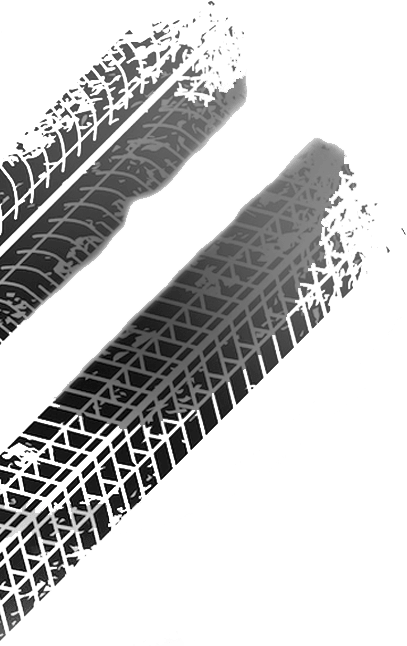
Get free Coupons
Take advantage of these great offers!



.png)
